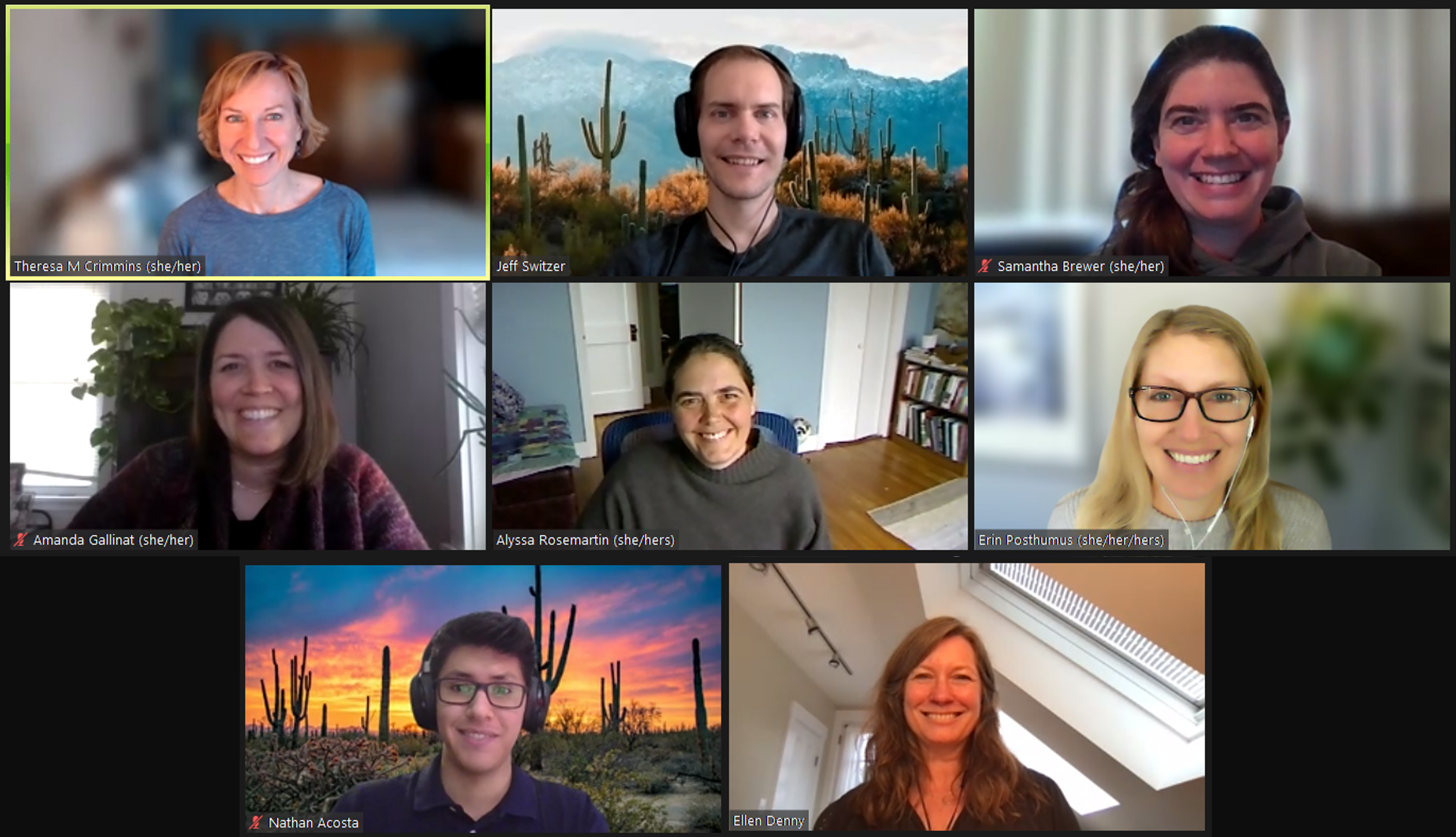Women of Impact: Theresa Crimmins + the network of millions
Theresa Crimmins’ love for the natural world was born out of family trips to the national parks, today she directs a network of citizen scientists whose shared observations help us better understand our changing climate.
Theresa Crimmins’ connection to nature wasn’t born overnight, it grew out of time spent outside and on family camping trips.
“We would take pretty extensive vacations in our pop-up camper to national parks around the country. Seeing the natural phenomena was, I think, what really sparked in me an appreciation for being outside,” Crimmins said. “The plants, the geology, how water can cut and shape canyons, it really grabbed me and wouldn’t let go.”
Her love for the natural world led her to study biology at Western Michigan University. There she met her now husband, Michael Crimmins, who was completing a master’s degree in geography.
“Around that time, I was asking my advisors how I could differentiate myself from all the other students that were graduating with a biology degree.” Crimmins recalled. “And they said you know, there are technologies that are just coming on the scene, something called geographic information systems, maybe go learn about that. And that’s what I did. It was great – it gave me the opportunity to enjoy natural phenomena through a new lens – I love maps!”
From there, she and her husband went on to study natural resources at the University of Arizona. Today she is a research professor in the School of Natural Resources and the Environment and the director of the USA National Phenology Network, based at the University of Arizona.
“The primary aim of our program is to engage professional scientists, natural resource managers and volunteers across the country in tracking when plants and animals undergo seasonal life cycle events throughout the growing season,” Crimmins said.
The USA-NPN team and other scientists around the world use these observations to better understand how the timing of seasonal events like spring wildflower blooms and bat or butterfly migrations are changing.
“It may not seem like a big deal for cherry trees to bloom a few weeks earlier than they did a few decades ago but shifts in the timing of events like this – termed phenology – has major consequences for species that depend on those flowers as a food source to be available at a particular time,” Crimmins said. “Changes in phenology actually have major implications for nearly every aspect of our lives, including human health, agriculture, tourism, wildfire and more.”
Crimmins attributes her connection to phenology to a happenstance meeting while working for the National Park Service’s Sonoran Desert Network Inventory & Monitoring program.
“We were at a meeting discussing the parameters of plant communities we should be monitoring in our natural parks to understand how they may be impacted by recreation, climate change, habitat fragmentation, and the various other pressures impacting natural landscapes,” Crimmins said. “That was how I crossed paths with Dave Bertelsen.”
Bertelsen was a local fixture on the Finger Rock Trail in the Catalina Mountains near Tucson. He hiked the trail approximately once a week for more than 30 years. On his hikes, he tracks and records every species of plant in flower within the five-mile-long segments of the trail.
“He offhandedly mentioned his records and started explaining the extent of what he had, and it led to a nearly decade-long collaboration,” Crimmins said.
Together with her husband, they were able to confirm Bertelsen’s intuitions—that over the decades of his hikes, many species along the trail had moved upslope and shifted their flowering time in response to changing climate conditions.
She was hooked on phenology, and “it just kind of went from there,” Crimmins said. “I wholeheartedly feel that the USA-NPN's success is due to the efforts of our entire amazing team, I am the very fortunate current director, however our success is the result of the efforts of our current team, our past director, our founders, and so many supporters all along the way.”
Crimmins is quick to point out her team at the USA-NPN is made up of incredible people of impact in their own right:
Erin Posthumus, outreach coordinator for USA-NPN, and Samantha Brewer, volunteer engagement coordinator, together inspire individuals and partner groups across the nation to track plant and animal phenology and help the network grow their data resource.
Ellen Denny is the network’s monitoring design & data coordinator, who works to ensure high quality and structure in their data. Jeff Switzer, systems analyst, and Nathan Acosta, web developer, together maintain the network’s suite of information technology infrastructure that “make the network’s program sing,” according to Crimmins.
Alyssa Rosemartin is the partner & application specialist, who cultivates relationships with external partners and co-develops data products to support decision-making. And, Tanner Bland, student administrative assistant, “helps keep the wheels from falling off,” Crimmins said.



